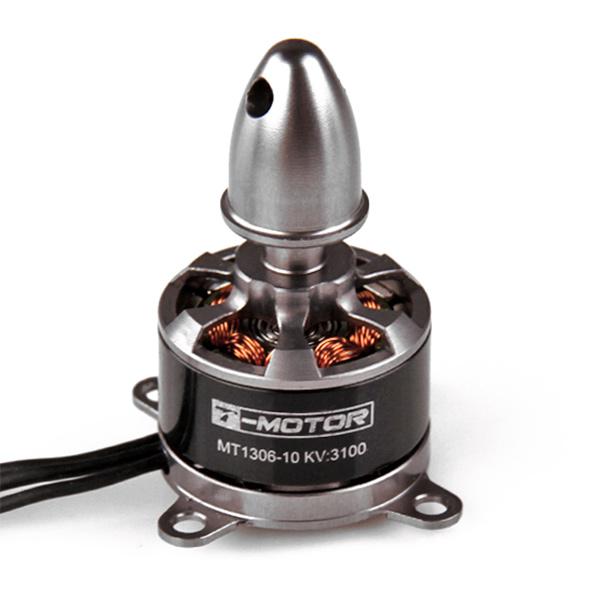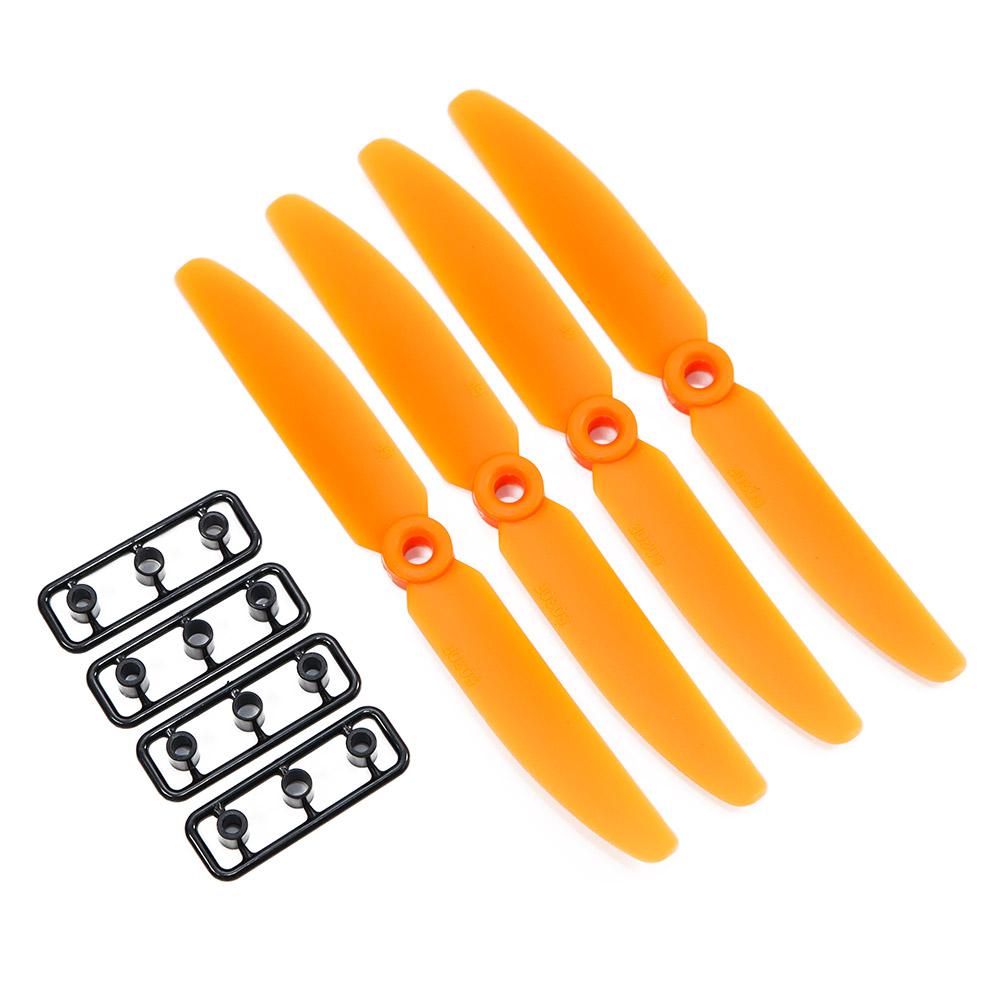Multi-Rotors, First-Person View, And The Hardware You Need
Motors And Propellers: Heavy Lifting
The right electronics are a first step toward creating flight, but a multi-rotor isn't going anywhere without good old-fashioned practical physics to pull it upwards. Your choice in motors plays a pivotal role in the success of a capable setup.
This is also the point when specifications start to get complicated. You'll want to do some research before settling on the right configuration for your quad. And motors are expensive, making it even more important to consider the options carefully.
Motors used these days are almost exclusively of the “brushless” variety. That equates to minimal friction. A cylindrical shell of magnets rotates on precision bearings around a core of tightly and neatly coiled wire. The propeller is fastened atop. Many Tom's Hardware readers already know the composition of an electrical motor, but for enthusiasts dabbling in multi-rotors, the inner workings are unimportant. So long as reasonable care is taken and dirt kept clear of the bearings, brushless motors are famously reliable.
Motors are assigned various notations, the most consequential being the Kv rating. Confusingly, Kv does not refer to kilovolts in this case. Rather, it's a motor velocity constant denoting the revolutions per minute (RPM) that a motor will turn when a 1 V potential difference is applied with zero load. This number is important, as it defines a multi-rotor's flight characteristics based on specifications like battery voltage and take-off weight.
Also vital are the propellers you choose. The variety of props is arguably greater than any other component we discuss; materials, dimensions, and price span a mind-bogglingly wide range. Generally, cheaper props are less precisely manufactured and more prone to creating vibration. This applies especially to the relatively larger end of the prop spectrum, with differences becoming less perceptible for smaller craft. Again, some vibration can be acceptable, bolstering the case for less expensive propellers. But if you're flying a quadcopter with the intention of producing well-shot footage, expect to spend more money on propellers.
It's worth pointing out that a majority of props are designed for airplane, though we're starting to see more optimized for multi-rotors. Graupner is a favorite brand amongst enthusiasts, and the company's E-Props, designed for electric power systems, are often cited as favorites. Other common options include Gemfan, APC, T-Motor, and RCTimer.
There are three simple measurements to keep in mind. The first is length, usually given in inches. The higher the Kv of your motors, the smaller your props need to be. Smaller props allow for greater speeds, but reduced efficiency. A larger prop setup (with correspondingly-low Kv motors) is easier to fly steadily, uses less current, and lifts more weight.
Get Tom's Hardware's best news and in-depth reviews, straight to your inbox.
Frankly, the best way to gauge the right range for motors and props is referring to manufacturer recommendations if you're building an ARTF kit. Or you can simply compare the setups of more experienced builders.
The second measurement, prop pitch, is less important, but of interest to more vigorous hobbyists. Prop dimensions are quoted in the form 9x4.7”, as a numerical example. The first number refers to the already-discussed length. The second is pitch, defined as the distance a prop would be pulled forward through a solid in a single full revolution, as if a screw through wood. The greater the pitch, the higher the thrust and necessary motor output. Typically, multi-rotors use props with pitches in the range of 3 to 5”. Lower pitches are more efficient, but lend a more sedate flying style.
Finally, we have bore measurement, which is simply the size of the hole in the center of the prop. This must be matched to the shaft of your chosen motors. Adapters are available to downsize a prop’s bore. Alternatively, some props, such as those produced by T-Motor, use a direct mounting system whereby screws secure the props directly to the motor head.
Current page: Motors And Propellers: Heavy Lifting
Prev Page Frames And Arms: A Foundation For Success Next Page Speed Controllers And Batteries-
gio2vanni86 Great article, and quite an amazing beautiful video shot at the end. Been seeing these around, and have really loved the idea of filming at a elevated level. I actually do hope you guys do more of these. I am bookmarking this for future reference. Thank you.Reply -
freiss Darn it, now you've piqued my interest. :-)Reply
As stated below, a rundown on build costs would be nice. Hey, you could even do a series of FPV articles akin to the PC builds...budget, mid-range, and enthusiast! -
Steveymoo So, how much would the components cost to lift a heavy DSLR with some decent glass? I is pretty curious.Reply -
es0 It would be awesome if you did build guides for different aircraft. I have begun building different ground based vehicles using arduinos and Pi's and would love to take to the skys next!Reply -
thechief73 Excellent article, nicely explained. Also glad to see someone in the media make a clarification from drones and multi-copters.Reply
FYI, DO NOT CALL THESE DRONES: Drones are for military use to kill people. These are, as the authors title states: multi-copters, multi-rotors, or RC model aircraft. By using the word "Drone" you give all the uneducated fear mongers and the law writers canon fodder to regulate this hobby into oblivion before it really gets a chance to take off. Some states and other countries have already passed laws that almost or outright make this hobby a CRIME!
I have been in the hobby about a year now and I have to say it is so far one of the most fun and rewarding things I have done. I will be doing this until I no longer have the means to do so. I highly recommend anyone that is interested in joining the hobby to buy a Hubsan X4 or one of the many similar RTF mini-quad models. This is widley regarded as the best way to learn how to fly a multi-rotor.
http://www.youtube.com/user/juz70/videos - not my channel, just really neat.
So, how much would the components cost to lift a heavy DSLR with some decent glass? I is pretty curious.
Just a few options: DJI S1000, SkyJib-8 Ti-QR, and CINESTAR-8.
It would be awesome if you did build guides for different aircraft. I have begun building different ground based vehicles using arduinos and Pi's and would love to take to the skys next!
Check out youtube, there are thousands of guide videos on the subject.
-
HKILLER i would highly recommend these 2 for those who that don't want to go through the trouble of the build and already have an smart device such as iphone or android ones...Reply
http://www.newegg.com/Product/Product.aspx?Item=N82E16886113011&cm_re=parrot-_-86-113-011-_-Product
and this cheaper model of it....
http://www.newegg.com/Product/Product.aspx?Item=N82E16814998083&cm_re=parrot-_-14-998-083-_-Product -
rmirwin2 There is one other regulating authority which is important to keep in mind for those seriously interested. In the US that would be the FCC, since transmission of quality RC and video signals over the available frequencies requires a Technician's class Amateur radio license. Many will find that a relatively easy thing to get that will also maximize the enjoyment of the hobby. Check in with ARRL.org, where you can get everything you need.Reply -
bluescrn Great intro to multicopters. But for beginners, it's best not to start out with a serious $500+ quadcopter, as there's a pretty good chance that you'll wreck it on it's first flight...Reply
Do yourself a favour and get a 'toy grade' mini quadcopter first, such as the Hubsan X4/Q4 Nano or similar. These are cheap, loads of fun, can be flown indoors, are much safer than the big ones, and are a great way to learn to fly a multicopter. Spend a couple of hours playing with one of these, and you'll significantly reduce the time/money spent on crash repairs when you start flying a more serious multicopter. -
bluescrn Oh, and if you go down the ready-to-fly route (or even if you self-build), try not to be the next idiot losing control of a DJI Phantom in a location where they shouldn't have been flying at all ( e.g. https://www.youtube.com/watch?v=_U8iHn_2l0U )Reply
Stick to quiet and safe flying locations, be aware of wind, line-of-sight, and possible sources of RF interference. And don't rely too much on GPS/return-to-home - you might not have a GPS lock when you need it (or it might not have had a lock at take-off, to determine the home position!)


